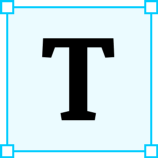 There are very few boundaries of how designers decide to shape interactions with the Digital and how everyone can be affected by it. That is a huge possibility. And it can potentially be a problem — unless designers start taking the same ethical responsibility as any other professional should, in shaping other people’s reality.
There are very few boundaries of how designers decide to shape interactions with the Digital and how everyone can be affected by it. That is a huge possibility. And it can potentially be a problem — unless designers start taking the same ethical responsibility as any other professional should, in shaping other people’s reality.
At the end of this text, the what’s, how’s and why’s are explored a bit more. And I would love to continue the dialogue around this. But if you are in a hurry and just need the tools for a more humanistic digital reality — just incorporate these user stories in your next design project. They stem from UNs declaration of human rights, and should be valid for every society.
If every digital artifact designed or redesigned from now on would just get these 10 user stories approved and done, the Digital would become a habitat where all humans of all sorts can thrive. And future generations wouldn’t have to ask us how we managed to screw things up — when we had all the possibilities to shape the future into something better.
As a user, I need to be treated with dignity and have my rights respected, to keep my freedom and sense of equality.
As a designer, I should make my users freedom and sense of equality my top priority. It is my responsibility to think really hard about how the digital artifacts we create could potentially be used to restrict the users need for safety, freedom and security. And I should actively make design decisions to steer away from those risks.
As a user, I need to be protected against cruelty, inhuman or degrading treatment or punishment.
As a designer, it is my responsibility to design the Digital without losing the sophisticated ways of human interaction and social contracts. I should provide means for users to promote what is socially accepted in society, and to react upon what is not socially accepted.
As a user, I need to be equally recognized and responsible to laws as everyone else.
As a designer, It is my responsibility to design the Digital in ways that don’t promote illegal behavior. I should also seek ways that any illegal actions can be noticed and registered to whomever is responsible for those actions.
As a user, I need to be able to decide on my own if I want to be part of any digital commitment or not, without suffering negative consequences.
As a designer, I should seek ways to provide transparency that let users make informed choices around using a digital tool or service. I should make sure anyone that is actively or passively included in any tool or service is aware of this membership. I should design for non-usage as well as usage, providing ways for users to opt out of memberships they no longer want to be part of or benefit from.
As a user, I need to feel certain that my privacy is protected and that information about my thoughts and ideas, about my social interactions and my whereabouts, are not provided or used in ways that I am not aware of and have accepted.
As a designer, I shouldn’t design the Digital so that it collects personal information that is not in the best interest of the users of whatever tool or service I am designing. Whenever the main objective of something digital is to collect data about its users, I should think twice about designing it at all.
As a user, I need to be able to express any thought, idea or belief to whomever I choose.
As a designer, I should actively seek to design the Digital so that there are no taboos or negative consequences of simply expressing your own thoughts.
As a user, I need to reach the full phlora of information and ideas created by others. So that I can explore the potentials of my intellectual capabilities.
As a designer, I should actively seek to design for inclusion and free information flows. I should contribute to a richness in the Digital, where users can learn and expand their knowledge of the world, explore their mental horizonts, and cultivate their tolerance, understanding and friendship to all other users.
As a user, I want to decide on my own which tools or services I choose to use or be a member or part of.
As a designer, I should make the Digital available for as many as possible. And I should incorporate accessibility in the process of creating any digital tool or service being built.
As a user, I want to influence how the Digital is taking form, since it is a big part of my life.
As a designer, I should include users in design decisions. I should provide a digital richness, sprung out of users’ needs and ideas on things that would have a positive effect on their lives.
As a user, I need a break sometimes. I need room for rest and leisure. I need time to see, feel and experience the physical world with full focus at times.
As a Designer, I need to realize that whatever digital tool or service I am creating, however crucial it may be, it is just a small part of any user’s physical and digital life. I should design tools and services that are there whenever their user needs them, and that stays out of their way whenever they don’t need them.
Because design ethics and social sustainability is a concern of every designer. There are a lot of great design leaders calling for sustainability and ethics in digital design, and rightfully doing so. But unless the design collective can convert that responsibility we all have as designers into actionable items — there is a risk of getting stuck talking about it, and not moving on to doing it.
Converting universal ethics into user stories is a way of bridging that gap, a way of making sure it is clearly communicated and incorporated in the actual digital artifacts that are being built.
As a user, invest a little time in checking if the digital tools and services you are using are designed ethically. React if you feel that they are not.
As a project team, make these user stories a natural part of your project scope from the very beginning. Having a tool for ensuring compliance to design ethics is in the interest of all team members — designers, developers, team leads, as well as product owners and stakeholders.
As a design agency or freelancing designer, make this a part of your code of conduct. It adds value to your brand. There is a website for this tool — where you can sign up to designing within this framework. You then also get a digital badge for your business communication. None of it with business interest from our side — we just want to add value to the design community, and to all users.
As a client or buyer, require ethical design from your designers. It’s good for your users, it’s good for your business, it’s good for society.
They should. Because they build upon the United Nations declaration of human rights. But they have also been filtered and interpreted through one design collective’s subjective minds. You should decide on your own whether you can stand behind this or not.
The declaration of human rights can be accessed from here:
Let’s just hope it’s in every human’s DNA to want to make this world a better place. If that fails — try inspiring the team by arguments that it adds economic value to the product, and that it adds user satisfaction. For marketing and human resources it should be a no brainer thinking up how taking ethics in consideration would add magnetism to the service or product you are building.
If you need to ask — are you sure you should be doing any design? In short — because designers are at the wheel in this endeavour of creating the digital life of each and every one of us. You got to trust the driver.
Ethics is hard, it’s messy, and it’s something each individual has to find their way in. But there are a lot of great thinkers and resources to get acquainted with. Just start somewhere — explore, discuss, reflect.
Yes. The intention is for it to be used as a means of actually doing design ethics in practice. It is not intended to be just another thought piece.
There is a site for it: www.digitaldesignethics.com
We are One Day Interact We made this tool because we are convinced that sustainability should be an important part of all design. By design, we seek to contribute to a positive development in a larger sense — for the individual, for humanity, the environment and the planet.
We made this as a contribution to the design community, there is no hidden business agenda.
I am Jonas Engkvist I wrote this. And I would love to continue the dialogue around it.
